VP Shunt Cost in South Korea from top hospitals starts from KRW 57735670 (USD 43000)approx
.A ventriculoperitoneal (VP) shunt is implanted into the head to help remove the extra CSF from the brain. The shunt takes the fluid out of the brain and pushes it into the abdomen, where it is absorbed by the body. This reduces the brain pressure and swelling.
South Korea has extremely talented and qualified medical staffs devoted to giving high-quality medical services to worldwide patients who are living or traveling in Korea and to the patients from out of the country as well.
The best VP Shunt Surgery hospital in South Korea provides a tremendously high standard of medical care and positions among some of the finest hospitals for VP Shunt Surgery in the world.
South Korea is one of the most tech-savvy and industrially advanced countries in the world. In South Korea, patients obtain advanced medical services with cutting-edge technology from very well-trained staff.
The main reason why health tourists are attracted to South Korea is that of the insurance coverage given to medical tourists. The insurance covers stress disorders, injury, and death of a patient that occur as a result of any complicated procedures they receive.
South Korea decreases health cost by 30% to 45% for patients, when compared to the cost in the United States. As the cost of doing VP Shunt Surgery in South Korea is less, thousands of people from other countries travel to South Korea each year with a faith to get treated without any financial burden.
Treatment cost
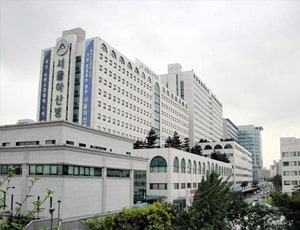
Asan Medical Centre located in Seoul, South Korea is accredited by ISO. Also listed below are some of the most prominent infrastructural details:


International St. Mary's Hospital located in Seoul, South Korea is accredited by JCI. Also listed below are some of the most prominent infrastructural details:
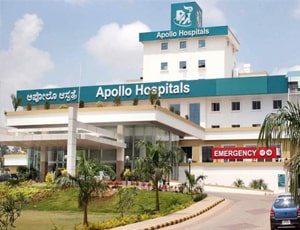
Types of VP Shunt in Apollo Hospitals Bannerghatta and its associated cost
| Treatment Option | Approximate Cost Range (USD) | Approximate Cost Range (INR) |
|---|---|---|
| VP Shunt (Overall) | 5632 - 8834 | 451538 - 721678 |
| Ventriculoatrial | 3325 - 5542 | 280991 - 468428 |
| Ventriculopleural | 5015 - 8531 | 414683 - 679549 |
| Lumboperitoneal | 5502 - 9086 | 464354 - 727969 |
DOCTORS IN 13 SPECIALITIES
FACILITIES & AMENITIES
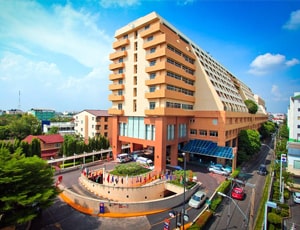
Types of VP Shunt in Vejthani Hospital and its associated cost
| Treatment Option | Approximate Cost Range (USD) | Approximate Cost Range (THB) |
|---|---|---|
| VP Shunt (Overall) | 10766 - 12993 | 382008 - 464673 |
| Ventriculoatrial | 3363 - 9178 | 121597 - 324853 |
| Ventriculopleural | 4458 - 11605 | 162424 - 430383 |
| Lumboperitoneal | 4989 - 13599 | 180753 - 491175 |

Types of VP Shunt in Fortis Hospital and its associated cost
| Treatment Option | Approximate Cost Range (USD) | Approximate Cost Range (INR) |
|---|---|---|
| VP Shunt (Overall) | 5075 - 8158 | 414181 - 664615 |
| Ventriculoatrial | 3038 - 5059 | 249170 - 417472 |
| Ventriculopleural | 4556 - 7583 | 373234 - 622831 |
| Lumboperitoneal | 5074 - 8101 | 416893 - 666084 |
DOCTORS IN 12 SPECIALITIES
FACILITIES & AMENITIES

Types of VP Shunt in Zulekha Hospital Sharjah and its associated cost
| Treatment Option | Approximate Cost Range (USD) | Approximate Cost Range (AED) |
|---|---|---|
| VP Shunt (Overall) | 4415 - 13660 | 16282 - 49138 |
| Ventriculoatrial | 3859 - 11025 | 14340 - 41402 |
| Ventriculopleural | 5085 - 13864 | 18661 - 51384 |
| Lumboperitoneal | 5516 - 16515 | 20480 - 61696 |

Types of VP Shunt in Medipol Mega University Hospital and its associated cost
| Treatment Option | Approximate Cost Range (USD) | Approximate Cost Range (TRY) |
|---|---|---|
| VP Shunt (Overall) | 6143 - 8936 | 188204 - 268953 |
| Ventriculoatrial | 3966 - 5517 | 117655 - 170380 |
| Ventriculopleural | 5088 - 8347 | 150254 - 252193 |
| Lumboperitoneal | 6291 - 8925 | 188017 - 266026 |

Types of VP Shunt in Sarvodaya Hospital and Research Centre and its associated cost
| Treatment Option | Approximate Cost Range (USD) | Approximate Cost Range (INR) |
|---|---|---|
| VP Shunt (Overall) | 5074 - 8109 | 416214 - 663492 |
| Ventriculoatrial | 3050 - 5076 | 249611 - 415510 |
| Ventriculopleural | 4571 - 7587 | 375783 - 621695 |
| Lumboperitoneal | 5071 - 8088 | 417257 - 668101 |
DOCTORS IN 14 SPECIALITIES
FACILITIES & AMENITIES

Types of VP Shunt in Prime Hospital and its associated cost
| Treatment Option | Approximate Cost Range (USD) | Approximate Cost Range (AED) |
|---|---|---|
| VP Shunt (Overall) | 4586 - 13665 | 16673 - 50153 |
| Ventriculoatrial | 3957 - 11026 | 14326 - 41281 |
| Ventriculopleural | 5106 - 14324 | 18986 - 52095 |
| Lumboperitoneal | 5543 - 16551 | 20284 - 62965 |
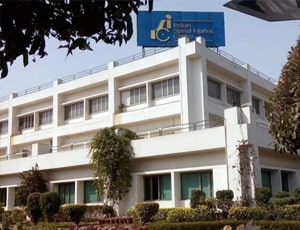
Types of VP Shunt in Indian Spinal Injuries Centre and its associated cost
| Treatment Option | Approximate Cost Range (USD) | Approximate Cost Range (INR) |
|---|---|---|
| VP Shunt (Overall) | 5069 - 8105 | 416027 - 667801 |
| Ventriculoatrial | 3046 - 5051 | 249736 - 417903 |
| Ventriculopleural | 4588 - 7627 | 373737 - 626459 |
| Lumboperitoneal | 5070 - 8085 | 415943 - 668388 |
DOCTORS IN 2 SPECIALITIES
FACILITIES & AMENITIES
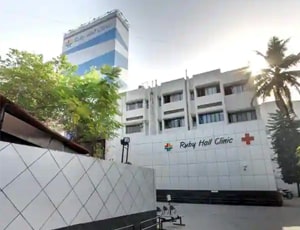
Types of VP Shunt in Ruby Hall Clinic and its associated cost
| Treatment Option | Approximate Cost Range (USD) | Approximate Cost Range (INR) |
|---|---|---|
| VP Shunt (Overall) | 4637 - 7500 | 380843 - 613552 |
| Ventriculoatrial | 2807 - 4738 | 226420 - 386118 |
| Ventriculopleural | 4196 - 7003 | 347258 - 578461 |
| Lumboperitoneal | 4727 - 7495 | 383662 - 619824 |
DOCTORS IN 13 SPECIALITIES
FACILITIES & AMENITIES

Assuta Hospital located in Tel-Aviv, Israel is accredited by JCI. Also listed below are some of the most prominent infrastructural details:
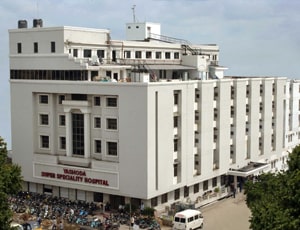
Types of VP Shunt in Yashoda Hospital, Malakpet and its associated cost
| Treatment Option | Approximate Cost Range (USD) | Approximate Cost Range (INR) |
|---|---|---|
| VP Shunt (Overall) | 5094 - 8084 | 417030 - 665677 |
| Ventriculoatrial | 3048 - 5082 | 250695 - 416416 |
| Ventriculopleural | 4569 - 7645 | 373897 - 626338 |
| Lumboperitoneal | 5099 - 8108 | 414266 - 663309 |
DOCTORS IN 10 SPECIALITIES
FACILITIES & AMENITIES

Types of VP Shunt in Anadolu Medical Center and its associated cost
| Treatment Option | Approximate Cost Range (USD) | Approximate Cost Range (TRY) |
|---|---|---|
| VP Shunt (Overall) | 6139 - 9068 | 187137 - 269154 |
| Ventriculoatrial | 3984 - 5596 | 118221 - 171920 |
| Ventriculopleural | 5027 - 8402 | 152932 - 253461 |
| Lumboperitoneal | 6053 - 9016 | 184204 - 273719 |

Types of VP Shunt in Burjeel Hospital for Advanced Surgery Dubai and its associated cost
| Treatment Option | Approximate Cost Range (USD) | Approximate Cost Range (AED) |
|---|---|---|
| VP Shunt (Overall) | 4516 - 13319 | 16740 - 50485 |
| Ventriculoatrial | 3880 - 11173 | 14151 - 42189 |
| Ventriculopleural | 5147 - 14357 | 18760 - 50880 |
| Lumboperitoneal | 5629 - 17167 | 20968 - 62497 |
The patient may need to lie flat for 24 hours after the shunt in the
The VP shunt procedure is a safe and most common procedure for the treatment of hydrocephalus. But it also involves some complications and risks. Some patients may be advised a VP shunt revision in case of
VP shunt malfunction is a complication that can occur in adults and any other age group. The blockage can take place from tissue, blood cells or by bacteria. Both the ventricular catheter and the distal part of the catheter can be blocked by tissue from the ventricles or choroid plexus.
This type of VT shunt infection is most commonly seen in one to three months after the surgery. Abdominal infection after VP shunt is also common. A person with VT shunt may also develop a generalized infection, which can become serious quickly.
Ask your healthcare adviser for the best multiple options and choose the one that meets your expectations
VP Shunt cost in South Korea varies from one hospital to the other. Some of the best hospitals for VP Shunt offer a comprehensive package that covers the end-to-end expenses related to investigations and treatment of the patient. Typically, the package cost of VP Shunt in South Korea includes the expenses related to the surgeon's fee, anesthesia, hospital, meals, nursing and ICU stay. Post-surgical complications, new findings and delayed recovery may have an impact on the total VP Shunt cost in South Korea.
There are many hospitals across the country that offer VP Shunt to international patients. Some of the best hospitals for VP Shunt in South Korea include the following:
The recovery of the patient many vary, depending on several factors. However, on an average, patient is supposed to stay for about 21 days in the country after discharge. This is important to ensure that the surgery was successful. During this time, control and follow-up tests take place to check for medical fitness.
Apart from the cost of VP Shunt, the patient is also required to pay additionally for daily meals and guest house accommodation. The per day extra expenses in South Korea per person are about USD 50 per person.
The following are some of the best cities for VP Shunt in South Korea:
The average duration of stay at the hospital after VP Shunt is about 4 days for proper care and monitoring. During the recovery, the patient is carefully monitored and control tests are performed to see that everything is okay. If required, physiotherapy sessions are also planned during recovery in hospital.
There are more than 2 hospitals that offer VP Shunt in South Korea. These hospitals have propoer infrastructure as well as offer good quality of services when it comes to VP Shunt Apart from good services, the hospitals are known to follow all standard and legal guidelines as dictated by the local medical affairs body or organization.
Some of the most sought after medical specialists for VP Shunt in South Korea are: